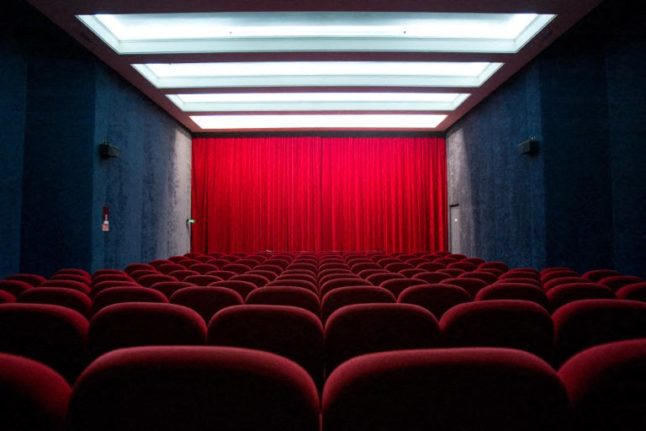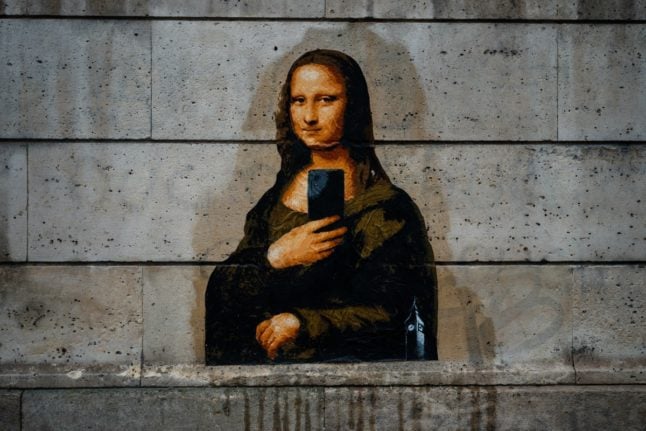Lost in Frenchlation‘s mission is simple – to open up the wonderful world of French cinema to people whose French is not yet good enough to understand a whole film without subtitles.
The club has recently expanded to Biarritz, Lyon, Caen and south-west France, but its December screenings are all in Paris.
This month marks the 8th anniversary of Lost in Frenchlation, so there are plenty of activities on the docket. From ice-cream tastings, Q&As with both directors and actors, as well as a special comedy night.
Here’s what is coming up:
Simple comme Sylvain (‘The Nature of Love’)
Details – Friday, December 8th at L’Entrepôt Cinema (7 Rue Francis de Pressensé, Paris, 14th arrondissement). Meet and greet raffle and custom ice cream by Kev Glace starting at 7pm, screening at 8pm. Tickets range from €7-€8.50 and can be purchased here.
Film – Directed by Monia Chokri, ‘Simple comme Sylvain‘ is a Quebecois comedy that follows Montreal based philosophy professor Sophia. She has been in a relationship with her partner, Xavier, for 10 years. The couple later hires Sylvian, a carpenter to renovate their country house. Sophia and Sylvain fall in love at first sight, but can it last?
L’Abbé Pierre
Details – Sunday, December 10th at the Luminor theatre (20 Rue du Temple, Paris, 75004). Arrive early for drinks and to give donations to ‘Serve the City Paris’ at 7pm. Donations like new or used tents, as well as sleeping bags, will be accepted. The screening will begin at 8pm. Tickets range from €7 – €11. You can buy them here.
Film – Director Frédéric Tellier seeks to tell the story of the important French figure and Catholic priest l’Abbé Pierre. Throughout his life, he was a member of the French Resistance during World War II and went on to become a politician. Eventually, he founded the Emmaus charity, with the goal of helping the poor and homeless.
Rien à perdre (‘All to Play for’)
Details – Thursday, December 14th at the Luminor Theatre (20 Rue du Temple, Paris, 75004). Arrive early for pre-drinks at 7pm, the screening will start at 8pm. Afterwards, there will be a Q&A with the director. Tickets range from €7 – €11, you can purchase them here.
Film – Director Delphine Dologet’s film tells the story of Sylvie, a mother who lives in Brest with her two children, Sofiane and Jean-Jacques. One night, Sofiane is injured while he is alone in the apartment. Sylvie is reported and Sofiane is sent into care. However, Sylvie does not give up, and with the help of her lawyer, she takes on the French legal system and bureaucracy to win back her son.
Flo
Details – Monday, December 18th at L’Arlequin (76 Rue de Rennes, 75006, Paris). Arrive early for pre-drinks at 7pm. The screening starts at 8pm, and there will be a Q&A afterwards with the director and lead actress. Tickets range from €8.50 -€11, and you can buy them here.
Film – Directed by Géraldine Danon, ‘Flo’ recounts the story of Florence Arthaud, who was a great sailor known as ‘the little bride of the Atlantic’. Navigating the male-dominated world of sailing, Arthaud made her name with her victory in the Route du Rhum competition in 1990.
Je ne suis pas un Heros (‘I am not a hero’)
Details – Thursday, December 21st at L’Arlequin (76 Rue de Rennes, 75006, Paris). Arrive at 7pm for pre-drinks, screening at 8pm. Stick around for a Q&A with the director afterwards. Tickets range from €8.50 -€11 and can be purchased here.
Film – This comedy/drama, by Rudy Milstein, tells the story of Louis, who one day is mistakenly diagnosed with a serious illness. Normally just a nice guy, people start to take notice of Louis after his diagnosis. Once he figures out that he is not sick, he’s hesitant to tell people the truth.
Les Bronzés font du ski (‘French Fried Vacation 2: The Bronzés go skiing’)
Details – Thursday, December 28th at the Luminor Theatre (20 Rue du Temple, Paris, 75004). Arrive early for pre-drinks at 7pm and enjoy a comedy show by Elspeth Grety at 8pm. The screening will start at 8:30pm. Tickets range from €12-€16, you can purchase them here.
Film – Directed by Patrice Leconte, enjoy the sequel to the original ‘Les Bronzés’. This time our favourite characters meet up for a new adventurous trip – this time finding themselves lost in the mountains – a classic French holiday movie dating from 1979 but still much loved.




 Please whitelist us to continue reading.
Please whitelist us to continue reading.
Member comments